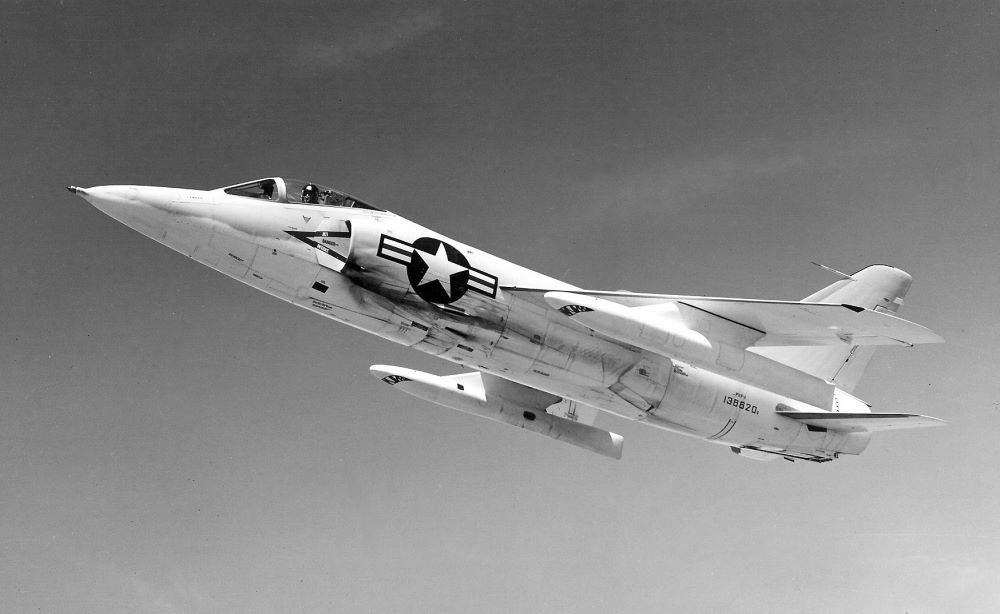Fighter aviation has come a long way from the crude old days when pilots shot down their own planes as often as the enemy’s. In those early days pilots had to shoot their machine guns through the spinning blades of their aircraft’s propellers. Many pilots ended up shooting holes through their propeller blades. This problem was solved with the invention of a synchronization gear, which prohibited the guns from firing when the spinning propeller was in the way of the muzzle.
Modern fighter planes have overcome many of the technological limitations that dogged early aviators and engineers. Modern fighter jets are complicated and sophisticated machines that have been carefully designed and built to the highest degree of precision. But technology has been known to fail. In 2019, an F-16 of the Royal Netherlands Air Force ripped bullets through the fuselage—bullets that came from the plane’s own guns. It wasn’t the first time a pilot had shot itself. The first recorded incidence and the most dramatic example of a fighter plane bringing itself down took place in 1956.

An F-11 Tiger in flight.
On September 21 that year, Thomas W. Attridge, a young U.S. Navy ensign took off in a Grumman F-11 Tiger from a test facility in Long Island, New York, for a weapons test over the Atlantic Ocean. He flew some 20 miles out over the open ocean and then climbed to 20,000 feet in preparation for test firing the aircraft’s four 20mm cannons. Attridge began a shallow dive, and at 13,000 feet he fired 70 rounds during a four-second burst. Immediately after, Attridge engaged the afterburner and entered a steep dive, and at 7,000 feet, fired again emptying the gun belts.
Moments later, the windshield of his aircraft was shattered by some object. Attridge assumed it was a bird strike. He immediately throttled back and pulled up to reduce speed and turned back towards the Grumman airbase near Calverton, New York. While flying back to the airbase, Attridge noticed that the object had also left a sizeable gash on the right engine's intake lip. Soon the engine began to give him trouble and he realized that he could not get more than 78 percent of the engine's maximum available power. Pushing the throttle pass this figure caused the engine to growl like “a Hoover vacuum cleaner picking up gravel from a rug.”
Attridge continued flying towards the airbase, but he rapidly lost altitude. Eventually, with less than a mile to go, the aircraft’s engine gave out and the Tiger sliced through a forest for 300 feet before coming to a stop. Attridge broke a leg and three vertebrae on impact, but he managed to free himself from the blazing plane. A rescue helicopter whisked him away to a hospital.

An investigation revealed that the object that struck the Tiger’s cockpit was not a bird but the rounds that Attridge had fired during the first burst. When Attridge accelerated his plane and began a steep dive, he inadvertently overtook his own bullets, which had slowed down considerably because of drag and was following a curved trajectory. Attridge was flying underneath the trajectory of the bullets, and eleven seconds later as he began to pull out of the descent, he flew into the stream of projectiles. One 20 mm round crashed into the windshield of the cockpit from above. Another round hit the right engine intake, and a third punctured the nose. The bullet that disabled the plane’s engine got lodged in the first compressor stage where it ricocheted between the fan blades breaking the blades and other components.
When the bullets left the aircraft's guns, they had a muzzle velocity of 2,000 miles per hour, but their speed was slowed down after a short distance because of air resistance. Meanwhile, the airplane accelerated to 880 miles per hour (about Mach 1.1) and dived sharply down. In the time both met, the airplane had less distance to cover than the bullets, while also travelling at about twice the speed of the (slowed down) bullets.
The Navy claimed that it was a “million-to-one shot”, but Attridge disagreed. “At the speeds we're flying today, it could be duplicated any time,” he said.
Sure enough, on June 20th, 1973, Pete Purvis, a test pilot for Grumman, was flying out of Point Mugu, California, in an F-14 Tomcat, when his plane was hit by its own 'Sparrow' missile. The missile had failed to drop and properly clear the airframe after launch, and then pitched up and punctured the plane's fuel tank. At the time of firing, the F-14 was travelling at nearly Mach 1. Fortunately, the missile was a dummy and the damage was purely from impact. Nevertheless, Purvis lost control of his aircraft and had to bail out.

A sequence of photos showing the Sparrow missile misfiring on a F-14 Tomcat piloted by Pete Purvis.
Tom Attridge returned to flight status a little under six months after the incident. In subsequent years Attridge would become the project manager for LEM-3, the first lunar module rated for human flight. He then became vice president of Grumman Ecosystems. He passed away in 1997.
References:
# An Unlucky First... The Shootdown of Tiger #620, Check-Six.com
# J.D. Simkins, Dutch F-16 makes emergency landing after plane shoots itself, Military Times












Attridge was a young Navy ensign? Hadn't he been a USN aviator during WWII? Also, wasn't he a Grumman test pilot in 1956?
ReplyDelete